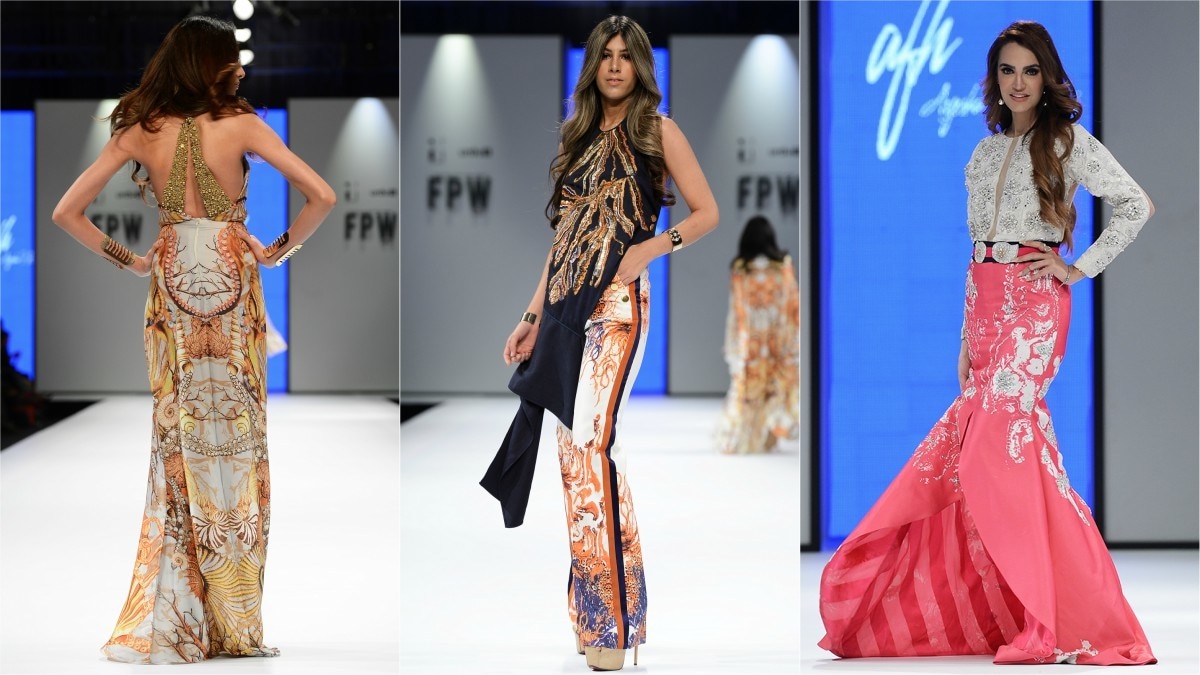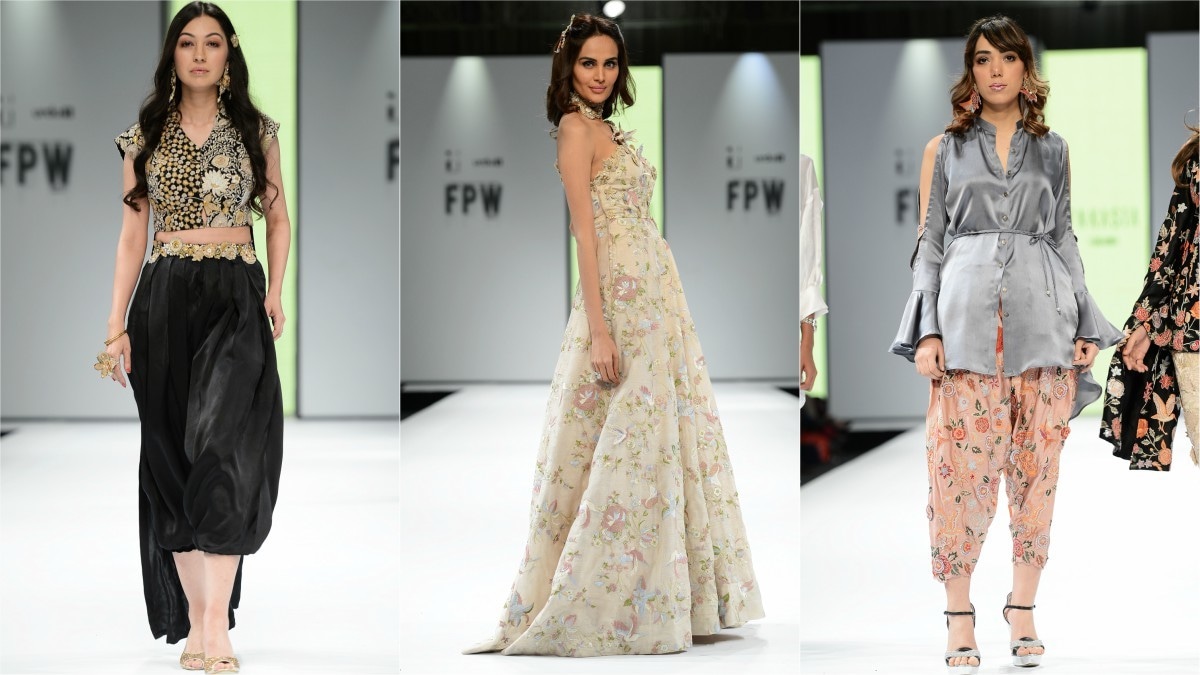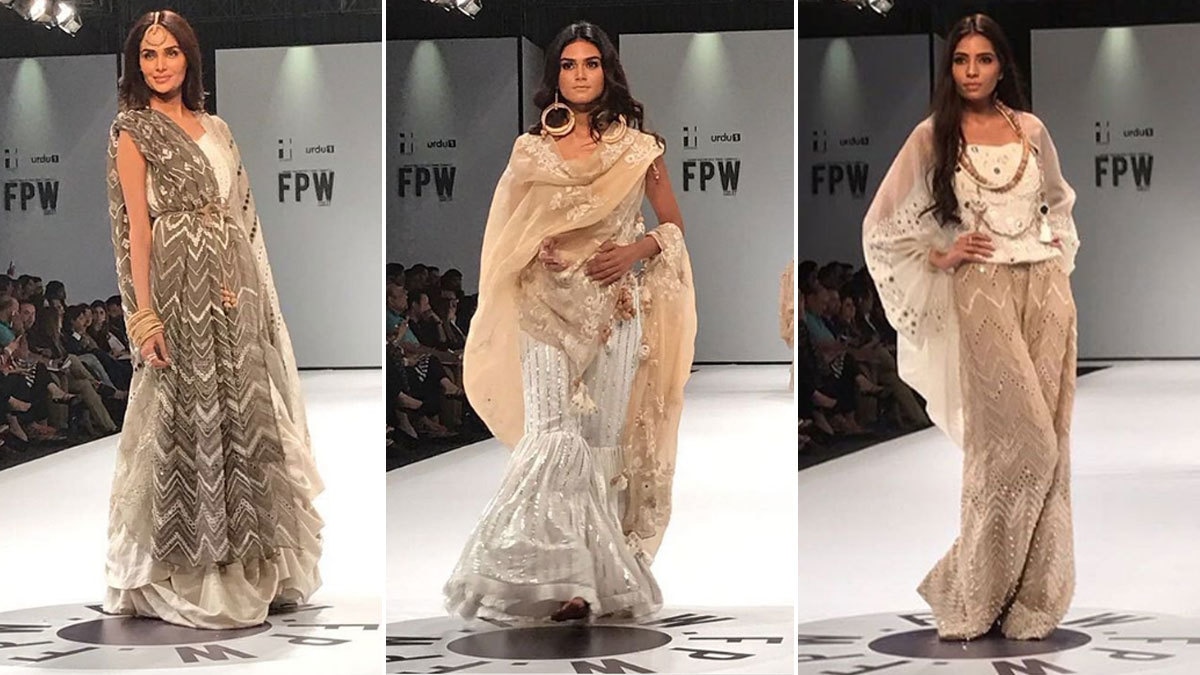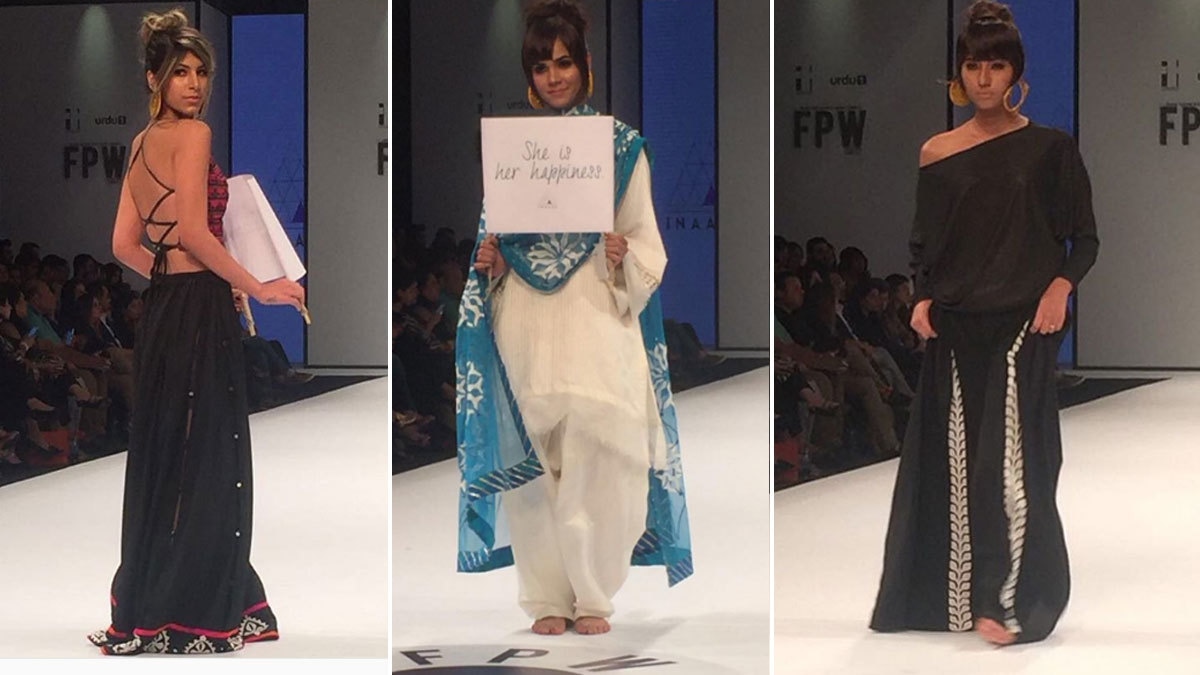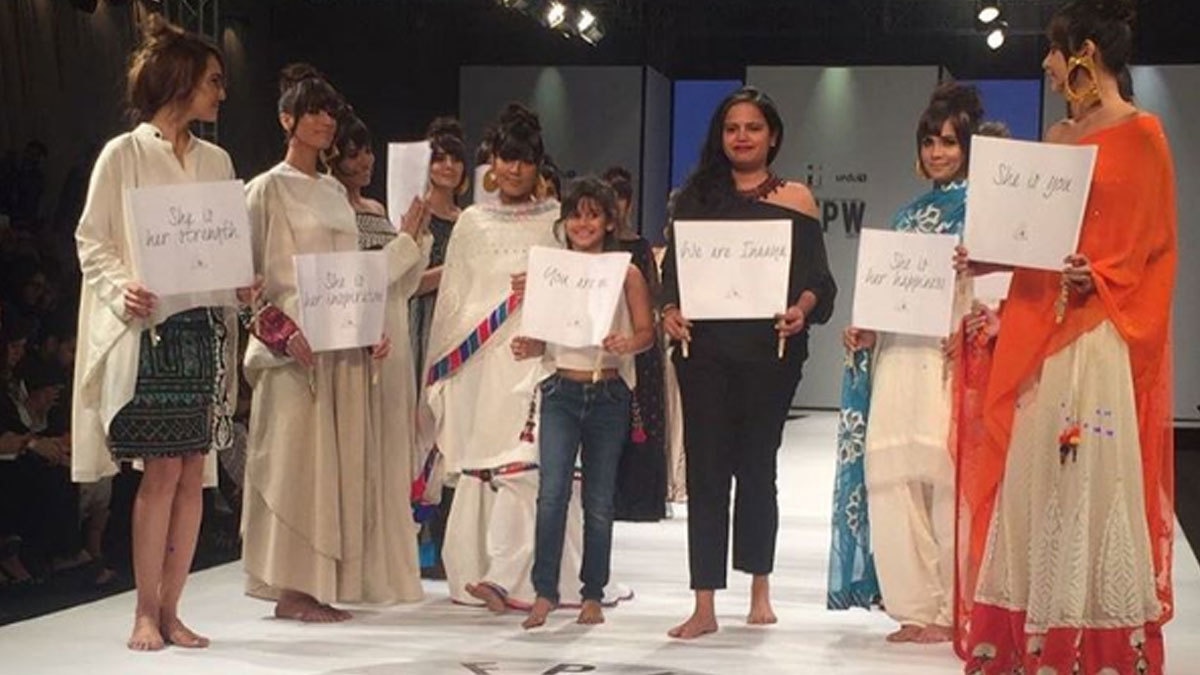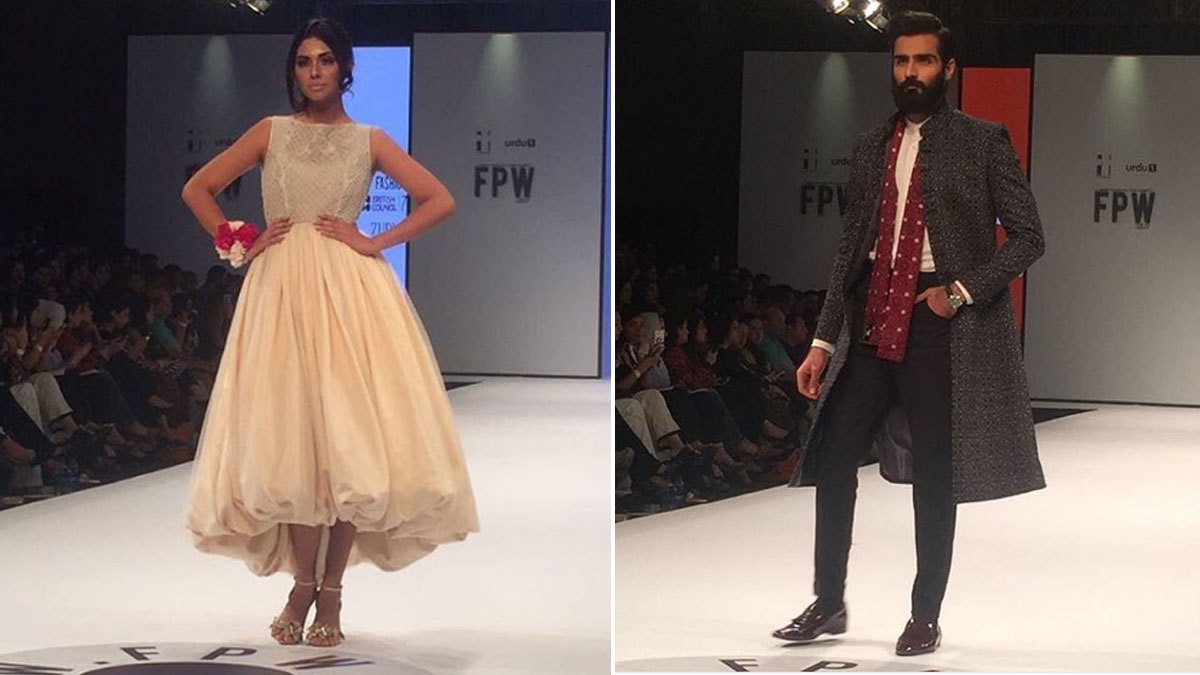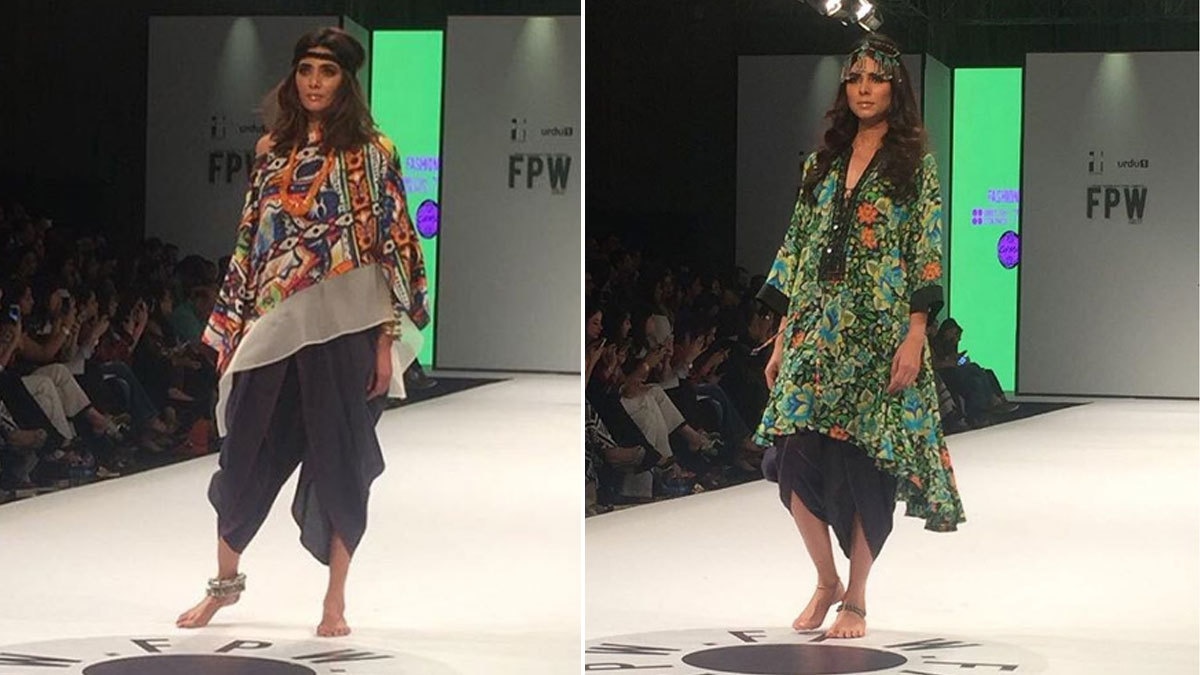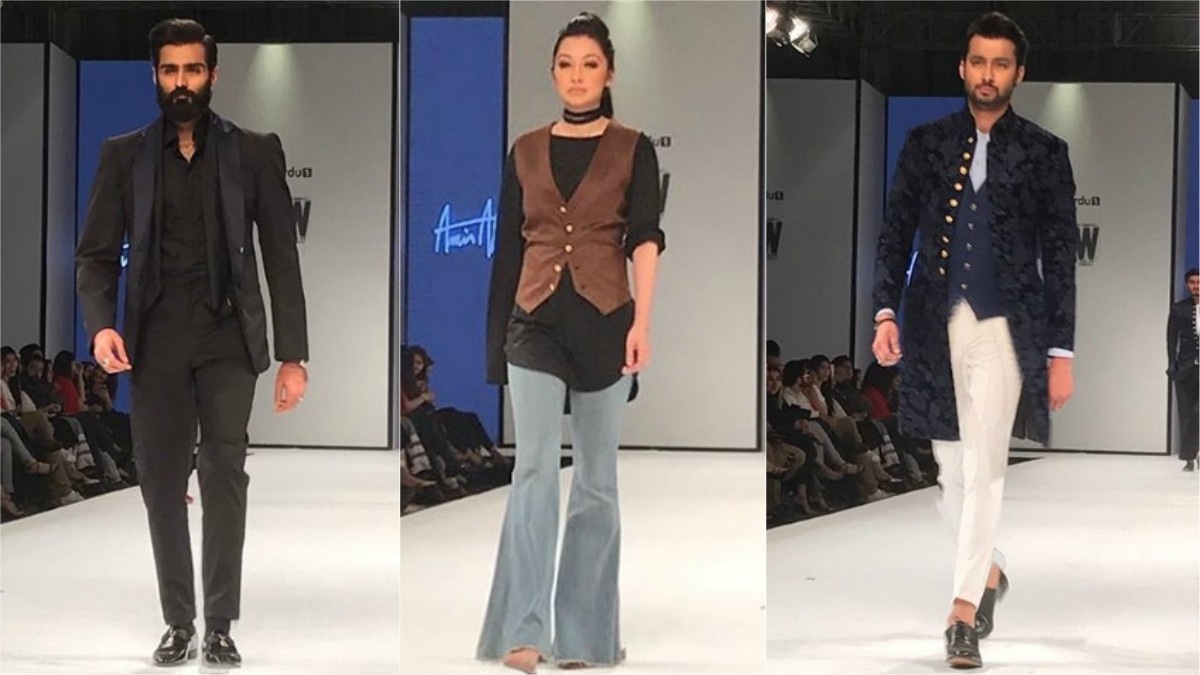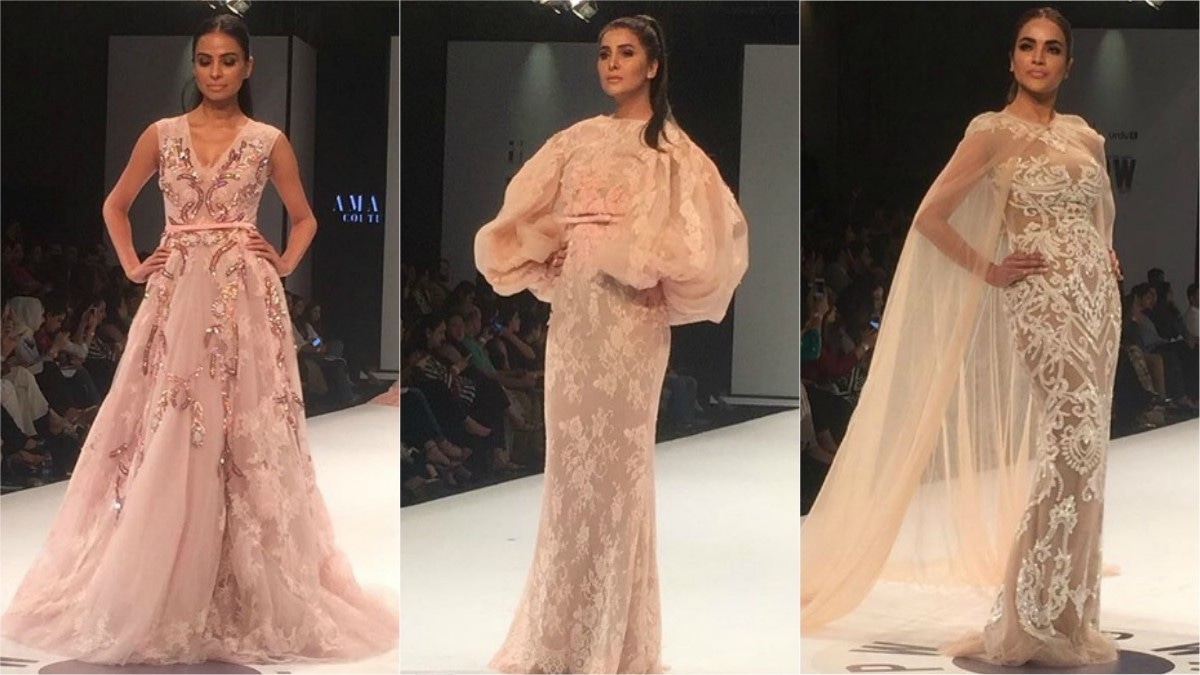FPW Day 1:
Designers fail to set new trends and showcase generic fashion
There were plenty of market-friendly clothes spotted on the first day but no new silhouettes, techniques, trends
Fashion weeks, in essence, have to be trendsetting. They have to be platforms for innovation in design, fusing ingenuity with craft and setting precedents that can then slowly trickle down to the high-street. Unfortunately, the new trends were few and far between on the first day of Fashion Pakistan Week (FPW).
It could have been that the participating designers were far too focused on creating market-friendly clothes, curbing creative allusions in favor of trying to please a conventional audience.
It could have been that the designers were confused, presenting layered winter looks on a platform dedicated to Spring/Summer. There was certainly a lack of editing on the Fashion Pakistan Council’s (FPC) part, allowing some unfathomable designs onto the catwalk.
There were some highs. For the first time, the Bank Alfalah Rising Talent showcase showed promise. A small segment by media sponsor Urdu1, promoting their upcoming movie
Mehrunnissa We Lub You with clothes by Zaheer Abbas, had plenty of star power with the caste taking on to the catwalk.
The cast of the upcoming movie Mehrunnisa We Lub You walked clad in Zaheer Abbas
But celebrities don’t ensure a fashion week’s success. Nor can debutante capsules keep a show going strong.
Overall, the first day of Fashion Pakistan Week only featured some very slight spurts of good designing. It is baffling that designers don’t avail the platform provided to them via fashion weeks to show memorable collections. Fashion week participation fees are considerably hefty and councils go to extreme measures to ensure that the show goes on regardless of security hazards.
But despite the efforts that must have been made, what ruled at FPW was typical, generic fashion that was, at best, market-friendly; at worst, ghastly.
Ayesha Farook Hashwani
Ayesha Farook has a generally pleasing aesthetic. The designer has a flair for merging print with bling and embroideries and working them onto slinky Western lines. Thigh-high slits on skirts ran into fitted pants, cut-worked backless numbers and dramatic bell-shaped sleeves.
One particularly enjoyed the design worn by Sara Hijri, who has possibly one of the prettiest faces on the catwalk: an assymetrical embroidered shirt paired with funky pants.
Ayesha Farook Hashwani stuck to her ethos and came up out on top
It was a collection that will sell well; sold as is in the niche market for Western prêt or tweaked here and there for the traditional client. Sophisticated and cohesive, it was quintessential Ayesha Farook.
Nauman Arfeen
‘Wild Wild Vest’ may have been a strange title for a collection but typically, Nauman Arfeen stayed far away from truly strange design.
The show started off with models wearing glow-in-the-dark jackets but quickly proceeded to crisp Eastern menswear; jackets and waistcoats layered over the kurta, variations of the shalwar and pajama and subtle pleats and embroidery.
For a collection called 'Wild Wild Vest', the clothes were quite tame
I wish the designer had refrained from straying towards womenswear. The few designs that he showcased for women were uninspiring and a bit too complicated.
A well-balanced lineup which could have benefitted from some experimentation. Nothing wild about it at all. And fortunately, no ‘vests’ on the catwalk either!
FnkAsia
FnkAsia seemed to be leaning towards wedding-wear with most of the collection featuring sequins and beads worked onto gowns and shirts. One spotted the long-hackneyed tulip shalwar, some vivacious culottes and wide-necked shirts cinched at the waist.
FnkAsia also did what they know best; we were hoping to see something with more oomph
It was a collection that could have made more impact had it delved towards more unique lines.
House of Arsalan Iqbal
Arsalan Iqbal’s menswear was uninspiring following grey and black monotones. One could sense that the designer had experimented with fabric, weaving a kite motif into the design, but the fitted jackets, waistcoats, blazers and scarves were all very wintry and didn’t make sense at a Spring/Summer show.
It made no sense why Arsalan Iqbal's collection was so heavily geared towards winter
Creating coherent Western menswear, sadly, is something that the local design fraternity is yet to master.
Bank Alfalah Rising Talent
The Bank Alfalah Rising Talent show came as a pleasant surprise. Young aspiring designers seem to have finally realized that placing perplexing designs from their thesis collections on the catwalk doesn’t make sense. A visible effort had been made towards creating clothes that were wearable with some elements of artistry.
Tooba Chottani’s capsule line, for instance, featured trailing capes and gowns that were hand-painted with abstract floral designs. The color palette of whites and blues was very pretty although the silhouettes could have been cut better. The off-shoulder worn by model Nadia Hussain particularly didn’t fit well.
Sara Hirji walks for Tooba Chottani
Areej Iqbal, meanwhile, drifted through predominantly pastel shades and presented some interesting detailings inspired by music. The rise and fall of beats in sheet music was etched onto hemlines and geometrical jackets. Funky, young and to a large extent wearable, Areej possibly presented our favorite collection within the Rising Talent show.
Areej Iqbal stuck to pastels and dreamy ensembles with a slight edge
In contrast, Fatima Abdul Rauf exemplified her dexterity with geometric cuts but her collection was a tad too experimental. Three-dimensional triangular prisms were placed over jackets, capes and shirts. With the fabric wielded into stiff zig-zags and the prisms looking far too uncomfortable to be wearable, this was thesis work rather than a stable fashion week showcase.
Works for ramp but what about wearing it off the runway?
And finally, Zafar Ahsan Naqvi showed potential with Karachi-inspired clothing. Cityscapes were mapped in print and the frequent use of net alluded to the sea. Worked in loose, baggy layers, Zafar’s collection stood out.
Zafar Ahsan Naqvi's collection was wild and quirky
In all fairness, the winning prize money – a whopping Rs 0.5 million awarded by Bank Alfalah – should go to either Zafar or Areej. This is the first time in the three painful years since its inception that the Bank Alfalah Rising Talent showcase actually showcased design with potential. It was a welcome change.
Humayun Alamgir
And then the fashion waned altogether in Humayun Alamgir’s show. Proudly titled ‘Ayash’ and dedicated to the flamboyant (sartorially challenged) bad boy, Humayun’s male models came out wearing black and gold blazers, shiny bow-ties, glittery suits, fancy cummerbunds and for good measure, some floral prints interspersed with sequins and embroidery.
And let’s not forget what they carried: a golden crocodile, a tiny roulette table, a vanity case, canes and a baffling star.
A bit too much bling if you ask us
What was the designer thinking when he created this collection? Moreover, what was the FPC thinking when they let this happen to their catwalk?
On the upside, it was good to see veteran male model Abbas Jaffri return to the runway after a long, long time – regardless of what he was wearing.
Nida Azwer
Far more coherent was Nida Azwer’s Susleme, featuring the designer’s quintessential play of three-dimensional embellishments with luxury fabrics like organza and silk. There were some very interesting lowers; baggy culottes worked with laser-cut florals, pants tied up at the ankle, a tapered shalwar and flowy bell-bottoms.
Azwer presented some fun asymmetric options making her line interesting
Shirt silhouettes varied from baggy kimonos to capes and short jackets. One did not enjoy the peplums, though, cinched at with waistline. There was an effort to make them interesting with asymmetric cuts but then again, the peplum just isn’t interesting anymore.
Tena Durrani
Peplum alert, once again, in Tena Durrani’s The Debut.
Tena Durrani sells well and she knows it. It was for her market that she presented her luxury line and one could sense how the risqué off-shoulders would soon be sobered down to variations of the formal kurta shalwar.
Tena's collection will fare well off the runway but there was nothing new to it
Taking inspiration from the garden of Eden, filigree tapered the length of Tena’s silhouettes which ran the gamut from dresses to capes and short skirts. Dominated by pastel colors, it was a very well-crafted collection that will sell well but there was nothing particularly new about it.
Then again, there was nothing particularly new about the first day of FPW, on the whole. Plenty of market-friendly clothing but no new silhouettes, techniques, trends.













